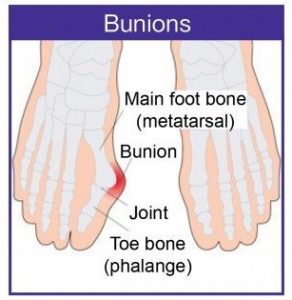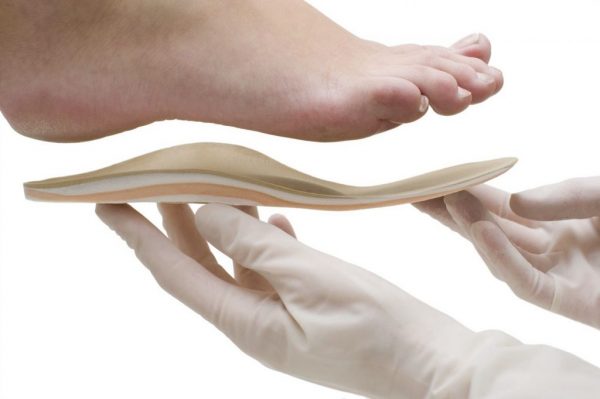Do I have bunions?
Today I’d like to chat about bunions and dispel any myths surrounding them! The term bunion is loosely thrown around and the common conception is “something my grandmother had”.
“Bunions” or Hallux Abducto Valgus are a common musculoskeletal condition in which the orientation of the metatarsal shaft and the toe begins to change. This results in a high angle where these bones meet and the subsequent “bunion” prominence on the inside of the foot. This “bunion” can be painful due to shoes pressing or more commonly from stress inside and around the joint due to the angle it now displays.

A bunion can form for many reasons or a combination of reason including:
- Hyper-mobility ( very flexible joints )
- Hyper-pronation during gait ( flat and rolled in feet)
- Trauma
- Tight or high heeled shoes
- Juvenile bunions ( born with condition)
As a bunion progresses past the very early stages and bony change has occurred it is not possible to reverse the deformity without surgical intervention however preventing the progression of the deformity is possible.
Non-surgical conservative treatment applied by the podiatrist usually involves controlling the damaging forces that influence the joint. In my practice my goal is to achieve a forefoot that isn’t compressed by shoes, is functioning well with the rest of the foot and the muscles surrounding are as strong as possible.
This can be done with a combination of treatments including:
- Podiatrist recommended footwear
- Inter-digital wedges to keep the toe straight whilst walking
- Orthotic therapy to optimise the function of the joint
- Exercises to activate the muscles around the joint
- Bunion sleeve to reduce friction over prominence

When patients query bunion surgery I tell them that bunion surgery is usually a last resort recommended it if one or a combination of the following factors are present:
- Constant pain in the joint
- Bunion is so large that it’s very difficult to find any shoes to fit
- The rest of the forefoot is starting to deform ( hammertoes, neuromas, dislocated toes )
- Conservative podiatrist treatments have failed such as: footwear advice, orthotics, interdigital wedges, exercises
There are many (over 100) recorded styles of operations for bunions but the main ones include:
- Minimally invasive surgery in which the only prominence is shaved ( no impact on the inside of the joint )
- Invasive surgery in which the prominence is shaved and the joint re-aligned and re-constructed
- Fusion surgery in which the prominence is shaved and the joint fused to allow for zero movement
The surgery chosen will mainly depend on the level of arthritis between the metatarsal and the toe and the significance of the angle they now make.
The recovery time is different with each surgery from a walk in- walk out procedure with some minimally invasive procedures or non weight bearing for 3-6 weeks depending on the patient. It is also important to remember that surgery does not necessarily make something perfect it will only change the structure and function of the pre-op state hopefully to a favourable outcome.
From my experience with patients who’ve had bunion surgery the procedures are largely a success and worth considering if a person is having a lot of trouble!
As always it’s best to see your podiatrist first and have a chat and get an x-ray to have a look at what is really going on inside!

 By
By 